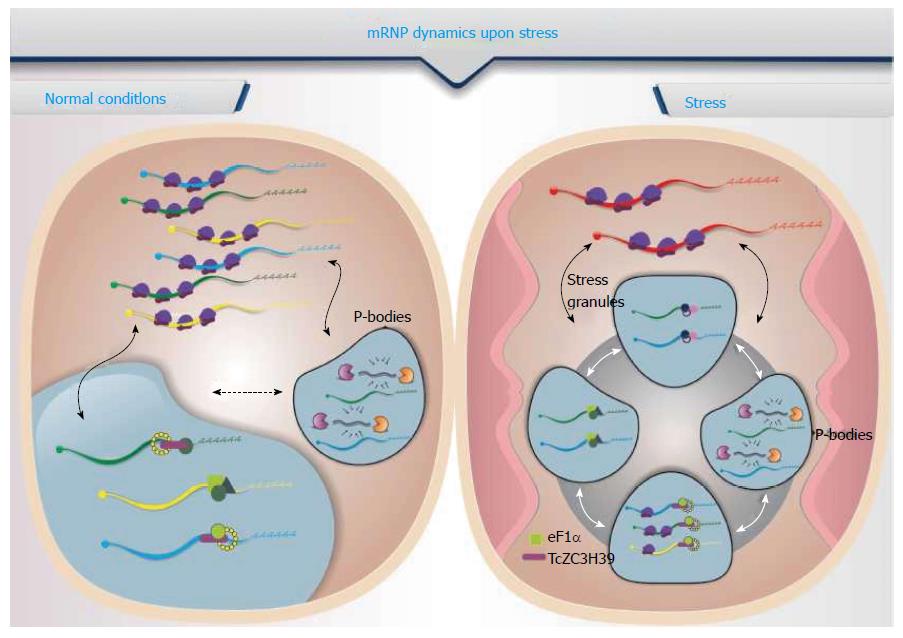Copyright
©The Author(s) 2016.
World J Biol Chem. Feb 26, 2016; 7(1): 78-87
Published online Feb 26, 2016. doi: 10.4331/wjbc.v7.i1.78
Published online Feb 26, 2016. doi: 10.4331/wjbc.v7.i1.78
Figure 1 Messenger ribonucleoprotein compex dynamics during stress.
Under normal conditions (left panel), several mRNAs exist in the cytoplasm and are normally translated. Some of these mRNAs can be degraded depending on the several translation rounds, and translation is repressed for some of them. Upon stress (right panel), most mRNAs leave the polysomes and are directed to either the degradation machinery or specific mRNP complexes (RNA granules), where they remain silent until normal conditions are restored. Few mRNAs are translated under conditions of stress. mRNP: Messenger ribonucleoprotein compex.
Figure 2 Physiological stresses and differentiation.
The schematic representation shows the life cycle of Trypanosoma cruzi. This parasite alternates between two distinct intermediary hosts. The change to each host involves a temperature stress, either a heat shock (28 °C to 37 °C) during the passage from the invertebrate to the vertebrate or a cold shock (37 °C to 28 °C) when the parasite switches from the mammalian to the triatomine vector. Inside the hosts, nutritional and pH stresses are determinants for the differentiation from the non-replicative to the replicative forms (either epimastigotes in the insect or amastigotes in the mammal host) and from those to the infective trypomastigote forms.
- Citation: Alves LR, Goldenberg S. RNA-binding proteins related to stress response and differentiation in protozoa. World J Biol Chem 2016; 7(1): 78-87
- URL: https://www.wjgnet.com/1949-8454/full/v7/i1/78.htm
- DOI: https://dx.doi.org/10.4331/wjbc.v7.i1.78










